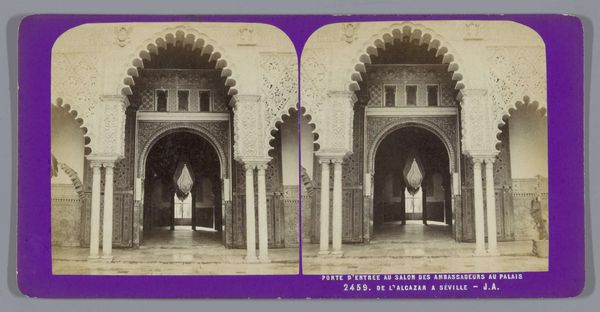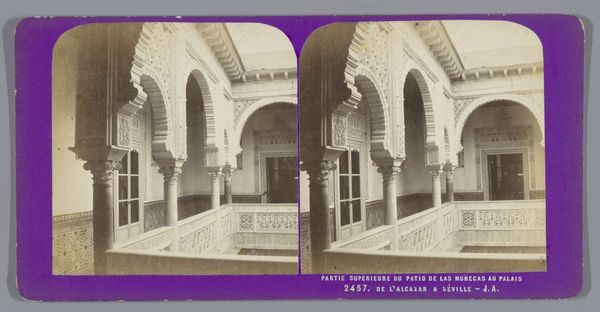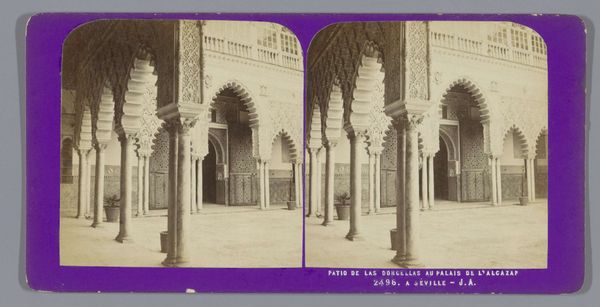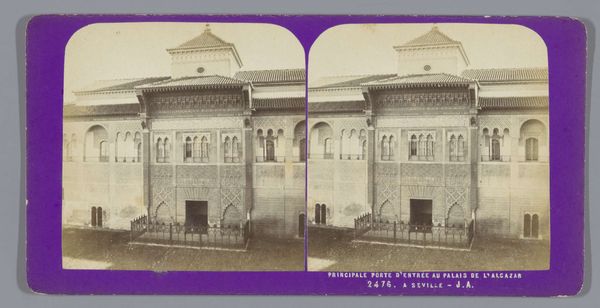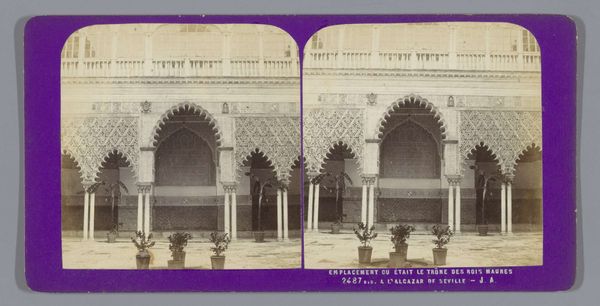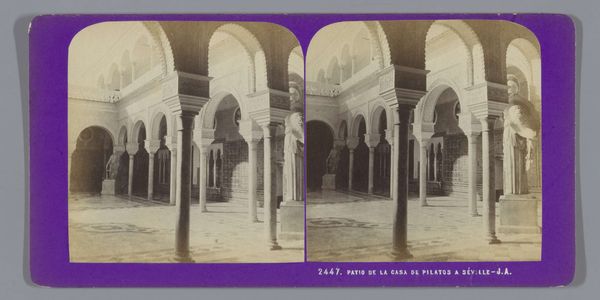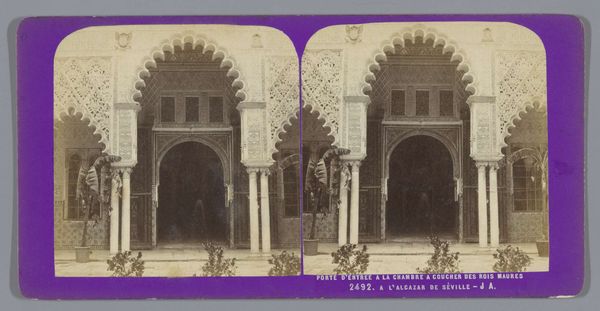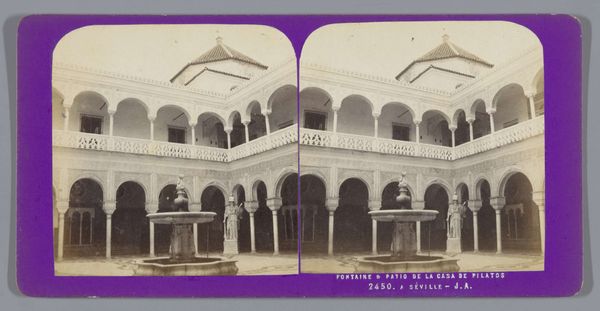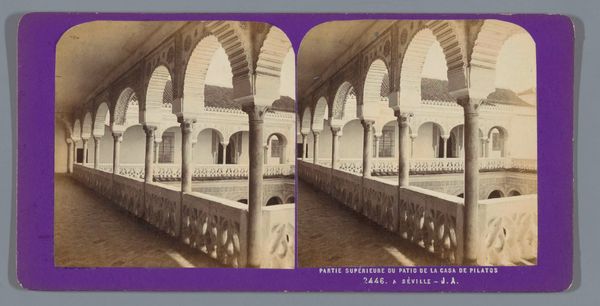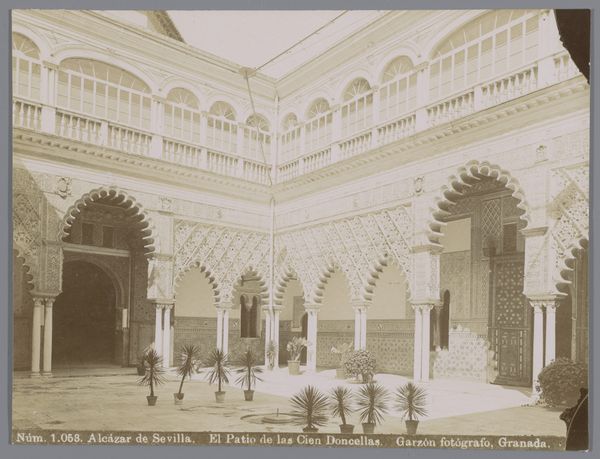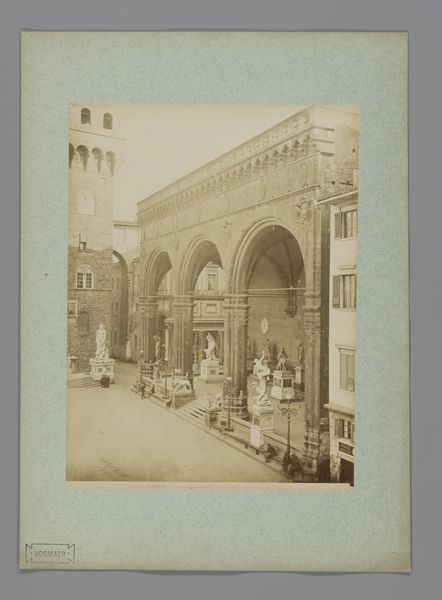
Gezicht op de Patio de las Doncellas en de poort van de Salón de Embajadores in het Alcazar in Sevilla 1862 - 1876
0:00
0:00
print, photography, architecture
# print
#
landscape
#
photography
#
coloured pencil
#
ancient-mediterranean
#
islamic-art
#
architecture
Dimensions: height 85 mm, width 170 mm
Copyright: Rijks Museum: Open Domain
Curator: Immediately, I'm struck by the geometric perfection, the balanced rhythm of light and shadow. Editor: We’re looking at a photograph by Jean Andrieu, taken between 1862 and 1876. It captures a view of the Patio de las Doncellas and the gate of the Salón de Embajadores in the Alcázar of Seville. It’s interesting how the technology of photography, then relatively new, documented these kinds of built spaces. The question I find foremost here is how widely available were these photographic records. Curator: Absolutely, and notice how the interplay of arches creates a mesmerizing effect, drawing the eye deeper into the architectural space. It almost has a theatrical effect with the plant decoration set out. Editor: I find the choice of documenting an area devoid of people peculiar. Did Andrieu wait until there was no one there? Curator: Perhaps, or consider that people from this time may be unaccustomed to photography. Perhaps it also has to do with the longer exposure times associated with this new medium. Focusing instead on the materials employed - stucco, tile, and carved wood - as markers of power and status allows a lens onto a consumer culture in nineteenth-century Spain. Editor: I concede there is great intent in the composition here: a shallow depth of field, a calculated placement of architectural components. Consider how the repeating patterns within the arches create an echo effect, further accentuating the depth of the space. Editor: Do you see the different states of the brick or rock components? You know I am interested in who constructed the space; it suggests something about the labor behind this site. We see the mark of hand-made decorative labor. What kind of market sustained these skilled laborers at that time? Curator: Very insightful. The photographer perhaps wants the architectural detail to overwhelm everything and is emphasizing a sense of timelessness. This photographic style could appeal to elite tastes and imaginations regarding the past. Editor: That said, it serves a unique purpose for contemporary viewers: revealing clues about societal structures and economic realities, both hidden within and illuminated by art objects. Curator: Indeed, reflecting on these complexities broadens our comprehension of cultural narratives interwoven within these intricate settings.
Comments
No comments
Be the first to comment and join the conversation on the ultimate creative platform.
